Oh, the sweet sizzle of generously seasoned ribs hitting the grill…can you hear it?
That classic poolside potluck filled with delectable barbecue goods has become more than a family pastime; it’s an American trademark. Amateur barbecue goers and cookers will soon come to know the eternal debate that’s plagued many over the years: dry rub versus wet rub, what’s the better rub for your ribs? In some instances, the impassioned dispute has called for some legendary BBQ battles, but we digress – so, what’s the deal with this war on marinating?
The Dry Rub
As the name suggests, the dry rub exclusively consists of dry ingredients. The mixture typically includes six to ten herbs and spices, of equal proportions, all used to make a thin crust over the ribs. Some common spices of choice are celery salt, garlic salt, cayenne pepper, paprika, pepper, and brown sugar. This way, you retain the natural juices and flavor of the meat, while adding a little extra zest on top. You’ll find this option works best for gamier meat or produce that doesn’t tenderize too quickly. And now for the glorious prep process: in order to impart the most flavor, you’ve quite literally got to rub the rub. Heavily massage the seasoning into the meat before grilling – and this is important, don’t be afraid to get handsy, just really get in there – you’ll taste the difference. For a crispier, more savory crust, keep the grill on high heat. While hardwood charcoal naturally forms a hotter fire, try adding some wood chips over the coals for an extra boost and a subtle woodsy undertone.
The Wet Rub
This sly beast steals most of the seasoning thunder from the dry rub but adds a liquid base for more moisture. People often opt for beer, vinegar, and olive oil for their base. When combining the dry and wet ingredients, you should strive for a paste consistency, so the seasoning sticks onto the meat more while cooking. Here’s the rub – for maximum juiciness and flavor, the ribs need to be cooked slowly, charring on the outside while drawing moisture inside from the rub. In fact, you get the most out of wet rubs when smothering the meat in the mixture and leaving it overnight. Keep your grill cover down when cooking and make sure to save some reserve of delicious rub to slather on when it comes time to flip the ribs. Unlike the dry rub, don’t cook your meat on high – keep a steady low to mid-temperature so the rub can caramelize into a dark outer layer, especially if you used a lot of sugar in the mixture.
The Results are in, and…
There you have it folks, the wet, the dry, the good, and the ugly. But, can’t we all agree – preferences aside, isn’t it just about the food at the end of the day? Nothing beats indulging in some juicy barbecue over the kids’ poolside antics. The result is show stopping regardless of how you got there, so let’s just dig in. You can’t go wrong either way.
And if you don’t want to cook, come to Rob’s Family BBQ! Eat in or Carry out, we’ll have your table covered with Rob’s scrumptious BBQ with all the fixin’s! Just stop by our restaurant at 8990 W. State Road 84, Davie, FL 33324 or call ahead to place your order at (954) 370-2774

